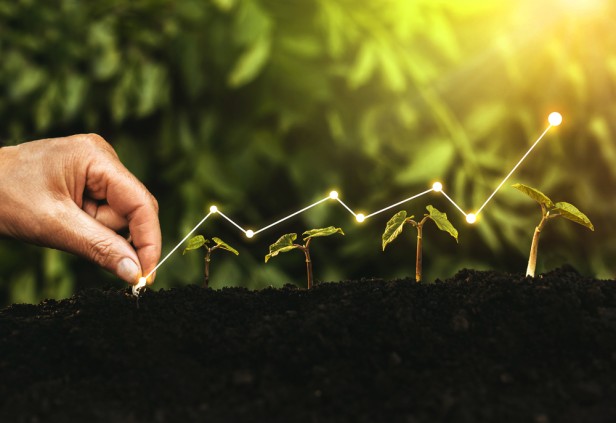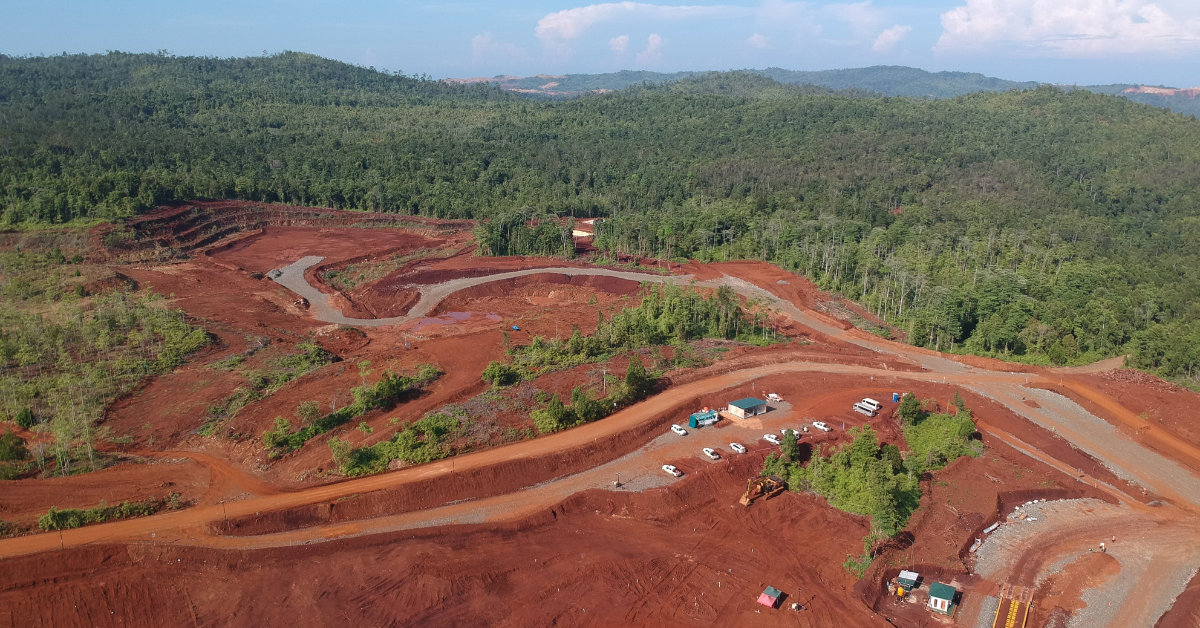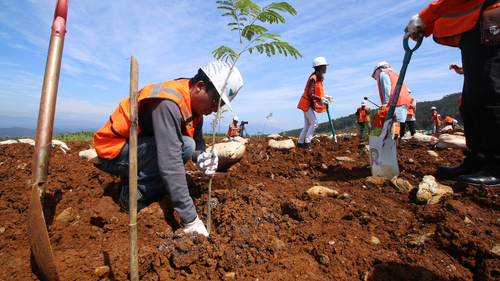Currently, we’re increasing at a rate of 0.2° Celsius per decade. One of the biggest contributors to climate change is burning fossil fuels, which increase the volume of greenhouse gases (GHGs) that trap heat inside the atmosphere. As we consume more fossil fuels, more GHGs are produced and the trend will continue upward.
Unfortunately, the increase in temperature doesn’t translate into a year-round vacation, but instead it poses a serious threat. When the average rises, it’s damaging and can even destroy our environment and costs lives. While we can’t stop global warming overnight, we need to take serious action now to prevent further increases. It will take decades for excess heat trapped in the oceans to radiate outwards and to start declining.
A clear mandate.
Failure to limit the temperature rise to 1.5° C may result in a reduction of the world’s GDP by roughly 7% by 2100. Global warming will have irreversible impacts, like losing 33% of animal and vegetal species extinctions by 2070. Before any more damage occurs, it's time to take serious action to combat the problem.
Climate change and mining.
When it comes to the world of mining climate change poses a serious risk for existing sites, such as damage from extreme weather. Yet many are still underestimating the extent of potential disruption. Confusion around the real impact has sparked a variety of responses from concerned mining companies tackling everything from the environment, water, recycling, and energy efficiency.
Shifting to cleaner energy.
As illustrated, decreasing GHGs is the key to achieving the goal of a carbon-neutral planet. To do that, we need to transition to a cleaner energy model. No matter what source we consider, blending reliability with affordability is essential. Achieving the graph’s goal of carbon-neutral by 2050 is an ambitious goal that depends on a combination of short and long-term strategies. And everybody needs to take part.
Top-down pressure from leadership.
57% of executives said their organization is feeling pressured to report on climate risks and their efforts at mitigation. Identification is a first great step to make a smooth transition to the next step: accountability. “There is power in coalition and by working together, the metals industry can – and must – embody global expectations on sustainability,” according to Matthew Chamberlain, CEO of the London Metal Exchange (LME). When influential leaders publicly advocate for change, ideas will shift into action faster.
Bottom-up consumers demand more green.
Consumers today have a loud voice and insist on being heard. Many are united in support of the planet and dictating quality standards for products and services. Which has inspired the strategy for the London Metal Exchange. “I don’t believe that it is the place of the LME […] to decide which sustainability factors are important […]. That power belongs, in my view, to the end consumers of metal-bearing products,” declares Chamberlain. The pressure to infuse sustainability will increase transparency from manufacturing, supply chains, and raw materials.
Global warming endangers mining operations.
Mining operations are already feeling the impact of global warming. In 2006, an unusual permafrost thaw threatened arctic operations at the Diamond Mine in Northern Canada. Global warming means more extreme hot and cold temperatures. For areas ill-prepared to fight snow and ice, infrastructure risks are serious for pipelines, runways, bridges, and roads. Extreme conditions add more risk for the people, which contradicts the priority on work safety.
Industries have a responsibility.
Since energy costs represent 30% of total cash expenses for mining companies, better energy management makes sense. But true sustainability involves increasing the reliability of services (like water and electricity supply), as well as safety (zero accidents). Let’s explore three examples of sustainability in action inside mining.
-
Water management.
Mining uses a lot of water and sometimes in regions with scarce supply. As Earth temperatures climb, arid regions will become drier. When water supplies are harder to access, prices go up, complexity rises, and communities can end up competing for finite resources. In Appin West mine, a water filtration plant was installed that treats and reuses more than two megalitres daily. This innovation means less water needs to be purchased from the city water company, which protects the people’s clean water supply. -
Off-grid electricity supply.
The reliability of grid electricity is taken for granted. But in 2016, South Australia ran into serious blackouts leaving parts of the city without electricity for several days. As a result, the BHP Olympic Dam Mine was forced to shut down, costing millions. Diversifying energy sources is the solution to mitigate the risks for mining operations. In Chile, the Nyrstar Metal Mine uses wind for a hybrid approach to electricity. This saves an impressive 7.7M litres of diesel annually. Multiple energy sources are the key to improving reliability and sustainability. -
Critical tail management.
Globally metal and mineral production yields 100 billion tonnes of waste per year. And it’s only growing. Managing waste production is essential for safety too. In 2019, a broken dam in Brumadinho (Brazil) discharged millions of tonnes of tailings resulting in 270 deaths. The environmental contamination was extreme given the heavy metals present in the waste. Innovation in waste management can be seen in the Prony Resources Mine in New Caledonia. They committed to building a dehydration plant to store dangerous tailings as part of a sustainable strategy at the heart of the buyback. Pressures from the communities and investors contribute to bring waste management to the forefront.
As one of the largest consumers of resources and producers of waste, there’s a lot of room for improvement. Making a positive change is a smart move for the environment and also the safety of people. Ethics are coming into play for investors and communities alike when it comes to future developments. The world is making a shift away from projects that compromise long-term viability for any party. As a key supporter of the mining industry, the power is in our hands to lead by example.

Zoé Braun
Content marketing specialist
Brand storyteller in more than just one language. She writes moving human stories and translates technical topics so they're easy to understand. Pretty nifty. She considers business is about building trust and long-lasting relationships. She gets jumpy if she doesn't get at least 3 weekly hours of sport, running, yoga, kitesurfing, - you name it!








Share this Article